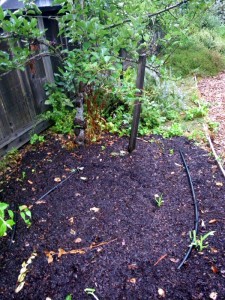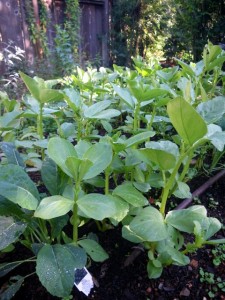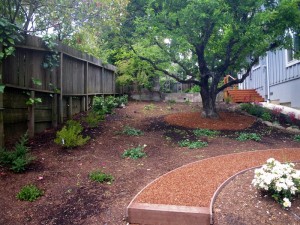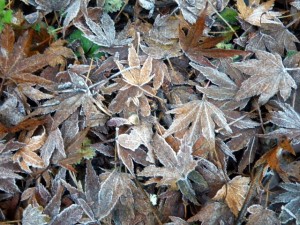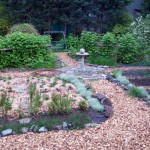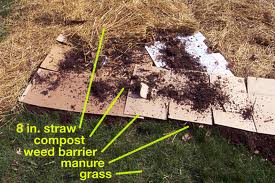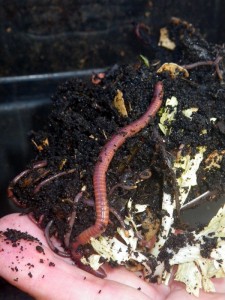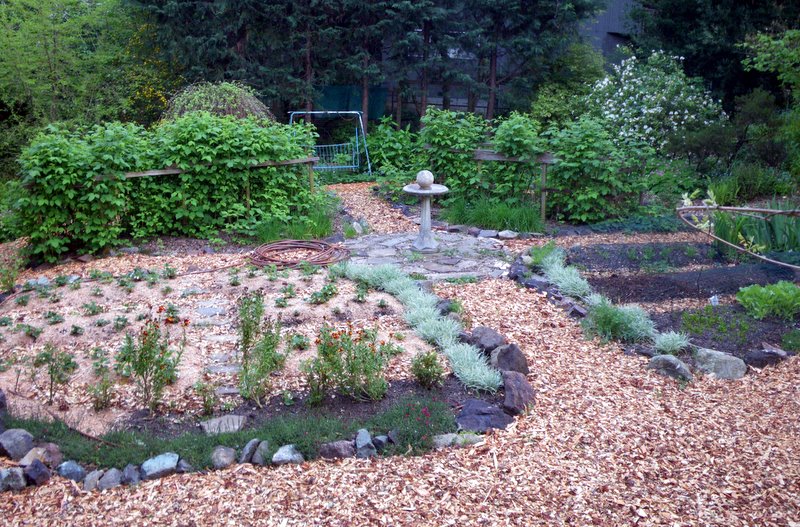Sheet Mulching for the Edible Landscape:
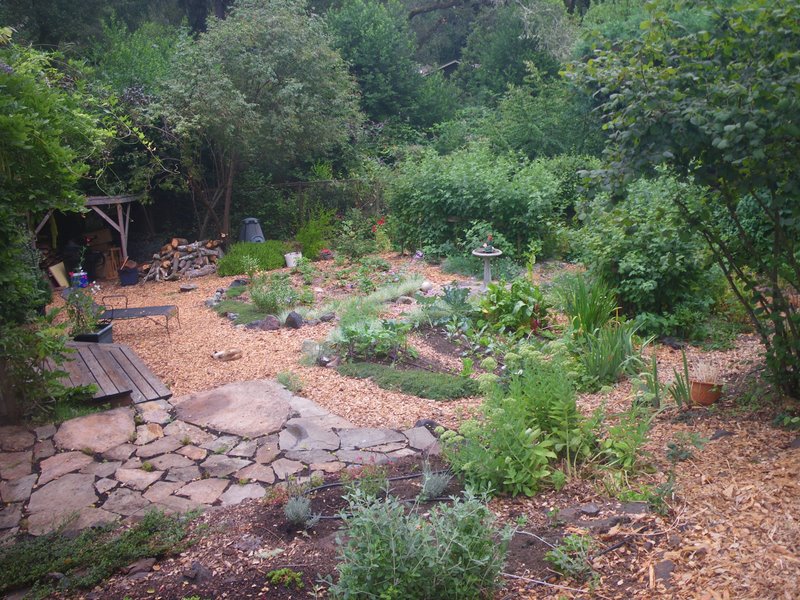
Former Lawn, now vegetables and fruit
What is sheet mulching? Simply put, it is putting several different layers of materials on your soil to get rid of your lawn, weeds and unwanted plants. It consists of manure, cardboard and mulch. You can use different kinds of manure and different mulches. The main purpose is to cover the weeds, allow worms to eat them and to create fertile conditions for growing your new plants. Let me tell you how I got rid of my old lawn.
The day I decided I could no longer stand to mow my lawn one more time, I also realized I wasn’t going to break my back digging it up either. Sheet mulching was my solution, and something you can also do fairly easily. Fall and winter is the perfect time to do this. You can let the covered area sit over the winter and in spring it will be ready for planting. Follow the simple directions below and you will be amazed at how easy it is turn turn old and in the way into new and the only way to go.
Decide on an area that you would like to replant. In many cases, an old lawn really suits the bill. First you mow the lawn, or cut weeds and leave them on the ground. Next, spread manure 2” deep over the whole area. If you live near horse stables, they will usually be happy to give you the manure for free. Be sure it has composted and is not fresh. You don’t want to bring in weed seed. If you can’t find local manure, then you can buy manure in bags from your local nursery. Thirdly, cover the manure with large pieces of cardboard (obtained free from a nearby appliance store).
On top of the cardboard you can lay another 2 inches of manure. Cover it all with six inches of fluffy hay or any other good looking mulch. Once done it looks fine. Your next help comes in the form of hardworking earthworms. Imported in the manure they make themselves right at home under their cardboard roofs, and over time (that would be Fall and Winter) they turn the lawn into beautiful soil. I sheet mulched my old lawn in the fall and when spring came, I planted varieties of strawberries, raspberries and blueberries as well as lilies, roses, herbs and flowers. It turned into a cornucopia of beautiful food. The best news was that I didn’t have to dig up the lawn at all, the worms just ate it and turned it into perfect soil.
This is really turning your yard into a beautiful Edible Landscape.
P.S. If you prefer to use custom made fabrics for your sheet mulching, Amazon and Gardeners Supply
 sell some good products. Both of these links I’ve provided will take you directly to fabrics for sheet mulching.
sell some good products. Both of these links I’ve provided will take you directly to fabrics for sheet mulching.
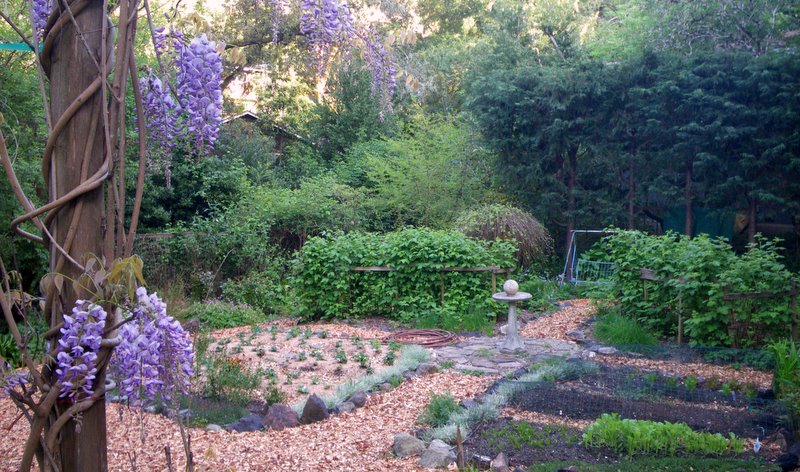
Close up view of new area for fruit and vegetables, used to be lawn
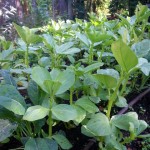

 Follow
Follow

